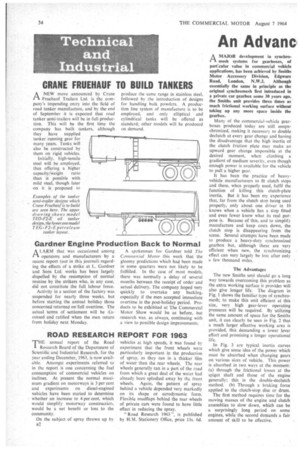ROAD RESEARCH REPORT FOR 1963
Page 36

If you've noticed an error in this article please click here to report it so we can fix it.
THE annual report of the Road Research Board of the Department of Scientific and Industrial Research, for the year ending December, 1963, is now available. Amongst experiments referred to in the report is one concerning the fuel consumption of commercial vehicles on inclines. At present the normal maximum gradient on motorways is 3 per cent and experiments on diesel-engined vehicles have been started to determine whether an increase to 4 per cent, which would simplify motorway construction, would be a net benefit or loss to the community.
On the subject of spray thrown up by
vehicles at high speeds, it was found by experiment that the front wheels were particularly important in the production of spray, as they ran in a thicker film of water than the rear wheels, The rear wheels generally ran in a part of the road from which a great deal of the water had already been splashed away by the front wheels, Again, the pattern of spray behind a vehicle depended very markedly on its shape or aerodynamic form. Flexible mudflaps behind the rear wheels of private cars were found to have little effect in reducing the spray.
"Road Research 1963 ", is published by H.M. Stationery Office, price I Is. 6d.
























































































































